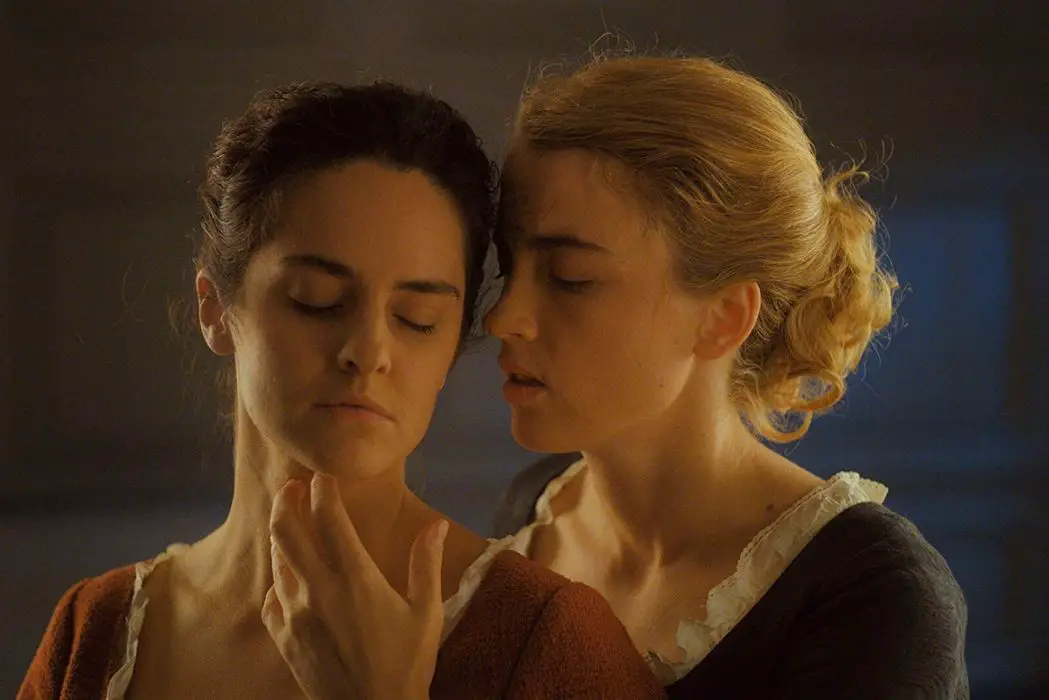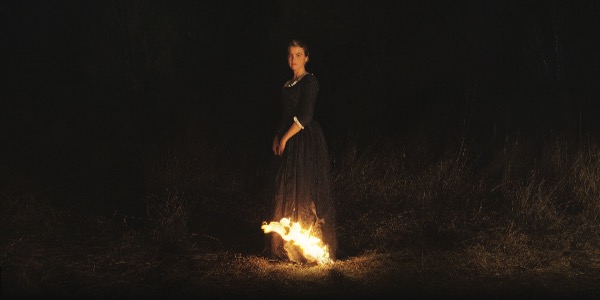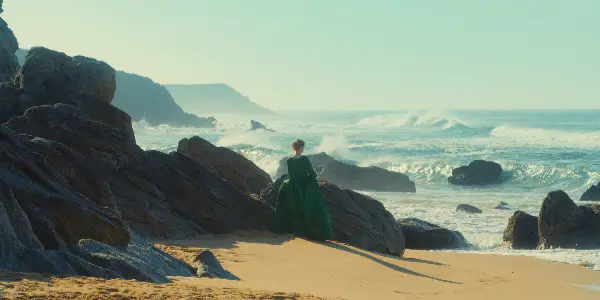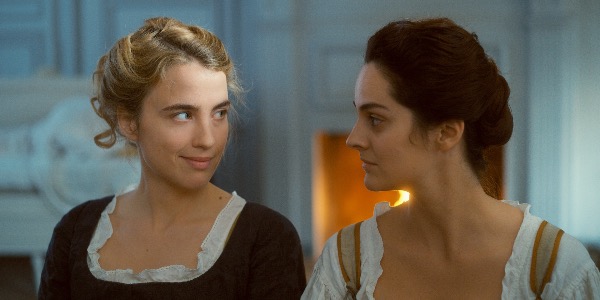PORTRAIT OF A LADY ON FIRE: Spellbinding Filmmaking From Céline Sciamma

Matt is a critic from the UK.
Céline Sciamma’s focus thus far in her career has been mainly on the lives of young women in modern day France. With her new film, Portrait of a Lady on Fire, Sciamma takes a different approach, jumping back in time to mid-18th century Brittany and the world of the female portrait artist, many of whom have been unceremoniously scrubbed from history.
Each of her previous three films (Water Lilies, Tomboy, Girlhood) have been deservedly lauded, and each have shown the consistent development of one of France’s best directors. With Portrait of a Lady on Fire, Sciamma has not only outdone herself once more, but has announced herself on the international stage with a full-blown masterpiece of a film.
Blazing Its Own Path
The film opens with the arrival of Noémie Merlant’s artist Marianne by boat, to the tiny isolated island where Adèle Haenel’s young noblewoman Héloïse resides. The comparison with Jane Campion’s Palme D’or winner, The Piano, is an obvious one to make, but when the credits roll 120 minutes later it is obvious that Sciamma’s picture stands tall on its own merit.

Marianne is tasked with painting a wedding portrait of Héloïse to send to her future husband. Héloïse however, is less than happy about the prospect of being married and refuses to be painted, and so Marianne is brought in under the pretence of being a maid hired to walk with Héloïse on the paths near the island’s cliffs. Marianne must paint her subject at night, relying on the glimpses she can get of Héloïse on these daily walks.
The Spoken and the Unspoken
It is a film of looks and glances, requiring the two leads to say so much with only their expressions. The fact that there is so much to be found in the space between the spoken words is a testament to the artistry of both the writer/director and the film’s lead actors. Merlant and Haenel find the nervousness and uncertainty, the tenderness and amusement between these two women in the flashes of eye-contact and brief glimpses of a smile.
As the film progresses, the love story at the heart of it becomes an enchanting one and the two lead actresses become entrancing. The chemistry between Merlant and Haenel is electric as they dance around the feelings building between them. Here are two actors on the top of their game, led by the guiding hand of the orchestrator Sciamma.

The reliance on the unspoken does not mean the script is lacking though. In fact, the script is completely superb in its sparseness. In between the silence, the dialogue between the two leads sizzles with intrigue and desire. In one scene, the pair share observations they have made about the other on their near silent walks, and it simply pulsates with honest romance. It is a wonderfully moving exchange that is, quite frankly, one of the best scenes of the year.
An Island of Two
At its core, Portrait is a film about the choices women make, and perhaps more crucially, the choices they are not allowed to make. It was always an intriguing left turn for Sciamma to move away from the modern French setting of her previous three movies, to this 1760-set period piece. However, she is developing upon the same themes, and exploring the same issues which permeate through time to this very day.
It is also a film almost devoid of men. Marianne is rowed to the island by men, but from then until the very end we barely witness another male. There is a fascinating comparison to make between the large swaths of open land on the island which Marianne and Héloïse have the freedom to wander, and the cramped nature of the world Marianne finds herself in later on as she is literally blocked in by men. This is not to say the film is in any way anti-men. Instead it is a celebration, an artefact, of true love gorgeously rendered on-screen.

The island in which the pair inhabit is almost an Edenic paradise, at least one in which they are somewhat sheltered from the reality of the world around them. Of course, the beauty and the pain are always intrinsically linked in such a tale, and reality will always encroach on this innocent splendour. Perhaps the inevitability of the tale makes it all the more impactful.
Portrait of a Lady on Fire: Conclusion
Portrait burns slowly, built originally upon a foundation of looks and glances. It then ignites into life in the immensely satisfying final scenes. The tale builds to this awe-inspiring, pulsating crescendo that leaves the audience’s collective heart thudding.
The excellence of all involved allows Portrait of a Lady on Fire to be not only one of the year’s best films, but also quite simply a timeless love story. Portrait of a Lady on Fire is the nearest to perfect cinema I have seen on screen this year. There’s not much more to say than that.
Portrait of a Lady on Fire opens in the US on 6th December 2019 and in the UK on 28th February 2020.
Are you a fan of Sciamma’s work? Let us know in the comments below.
Watch Portrait of a Lady on Fire
Does content like this matter to you?
Become a Member and support film journalism. Unlock access to all of Film Inquiry`s great articles. Join a community of like-minded readers who are passionate about cinema - get access to our private members Network, give back to independent filmmakers, and more.
Matt is a critic from the UK.













